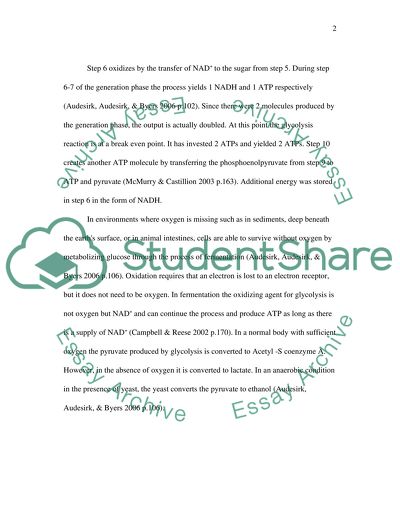The Glycolysis Process in Humans and in Yeast Essay. Retrieved from https://studentshare.org/miscellaneous/1503930-the-glycolysis-process-in-humans-and-in-yeast
The Glycolysis Process in Humans and in Yeast Essay. https://studentshare.org/miscellaneous/1503930-the-glycolysis-process-in-humans-and-in-yeast.


